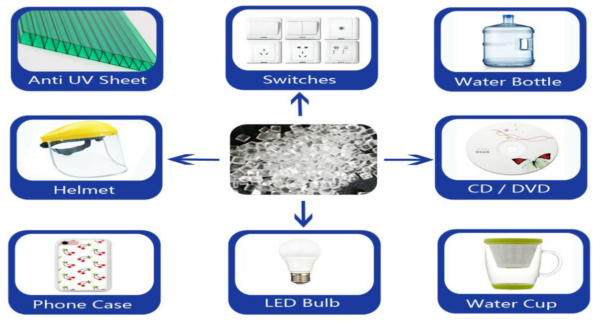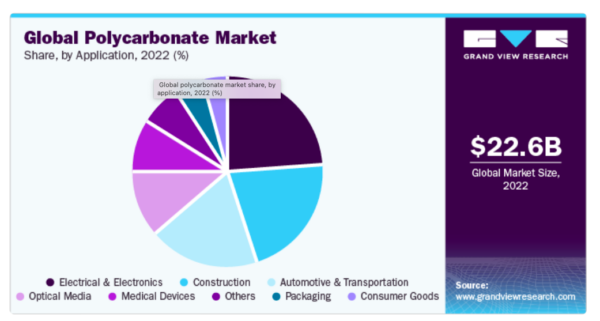Inside Materials – Polycarbonate

Polycarbonate (PC) is an essential thermoplastic renowned for its clarity and durability, making it widely used across various applications.
Since its introduction in 1953, polycarbonate (PC) has rapidly emerged as one of the most popular engineering plastics worldwide. Its exceptional properties, such as clarity and high-temperature resistance, have made it a highly sought-after material in the plastics industry. Today, global demand for PC exceeds 1.5 million tons annually.
You can also read: Innovative Wound Care Device Relies on High-Tech Polycarbonate
Exploring Polycarbonate Properties
Chemists characterize PC as a synthetic and amorphous plastic with a carbonate group in its molecular structure. They primarily produce it through an interfacial process involving the reaction of bisphenol A with carbonyl chloride. This production method makes a robust, rigid, and durable engineering thermoplastic that maintains structural integrity up to 140°C. It also remains tough down to -20°C. Specialized grades can even withstand lower temperatures. Additionally, experts classify PC as a slow-burning material while it exhibits thermal resistance up to 135°C.
Processing Techniques and Applications
PC can be processed using various techniques. These include injection molding, structural foam molding, extrusion, vacuum forming, and blow molding, which allow manufacturers to produce a wide range of products.

The image displays various products made from polycarbonate across different industries. Courtesy of Xiamen Keyuan Plastic.
The versatility of PC enables its use in myriad applications across several industries. These include electrical and electronics, construction, automotive and transportation, optical media, medical devices, packaging, and consumer goods. Its widespread use attests to its adaptability and the growing demand for innovative materials.

The graph illustrates the global polycarbonate market share by application in 2022, highlighting that electrical and electronics, construction, and automotive and transportation hold the largest percentages. Courtesy of Grand view research.
Innovations and Sustainability
Recent advancements in PC technology have led to the developing of products based on chemically recycled PCs. These advancements emphasize the industry’s commitment to sustainability and environmental responsibility. COVESTRO, with its Makrolon® RP polycarbonate range, is at the forefront of this innovation. These products retain traditional PCs’ high performance and clarity, making them suitable for multiple applications—from electronics to automotive parts. They also promote a circular economy within the plastics industry.
Industry Leaders and Future Trends
Major players worldwide drive the highly competitive PC industry. Key companies include Covestro, SABIC, Lotte Chemical, Teijin Industries, and Mitsubishi Engineering Plastics Corp., among others. These industry leaders continually innovate with PC, expanding its applications and solidifying its position as a cornerstone material in engineering. As the industry evolves, future trends may include further improvements in recycling techniques and the development of bio-based PCs. Additionally, advancements may focus on enhancing performance characteristics to meet the demands of emerging technologies.
